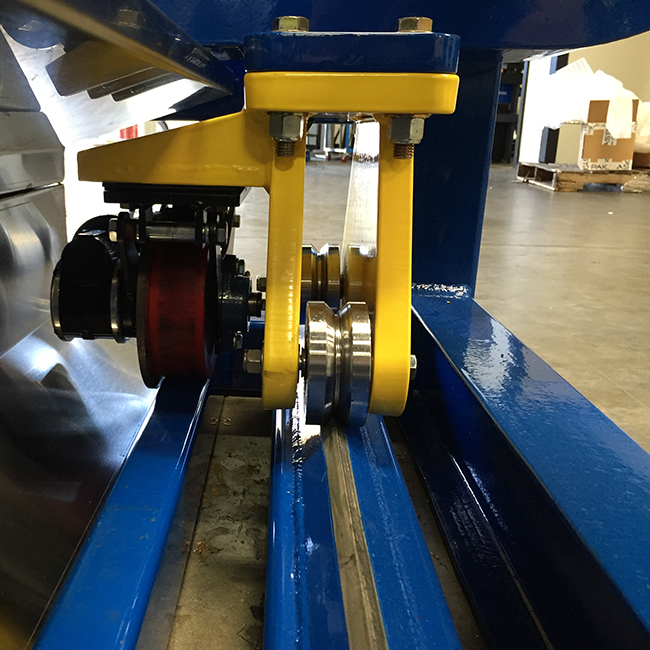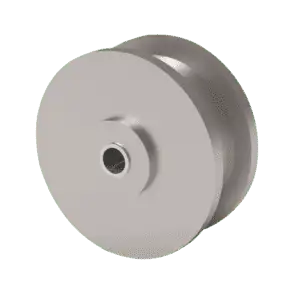

A common question related to rail applications is, “How hard should my wheels be?” The answer to this question is variable, so let’s review the details you’ll need to understand when designing a wheel and rail system.
 Typically, a rail system uses a single flange, dual flange, or v-groove type wheel. It is almost always a straight-line application. It usually consists of a conveyor system or an application involving a type of batch processing – i.e., heat treatment or aging. Rails can be set into the floor to prevent trip hazards or placed above the floor. Then the wheel setup tends to be either two single flanged wheels, one dual flanged and one flat, or one v-groove and one flat wheel. These set-ups allow for enough clearance with the rail setups, so the installation doesn’t have to be perfect.
Typically, a rail system uses a single flange, dual flange, or v-groove type wheel. It is almost always a straight-line application. It usually consists of a conveyor system or an application involving a type of batch processing – i.e., heat treatment or aging. Rails can be set into the floor to prevent trip hazards or placed above the floor. Then the wheel setup tends to be either two single flanged wheels, one dual flanged and one flat, or one v-groove and one flat wheel. These set-ups allow for enough clearance with the rail setups, so the installation doesn’t have to be perfect.
Once you pick your wheel and rail set-up, you need to understand the other variables of the application – how long does it run for, how long is it stationary, are there high temperatures (above 100°F) involved, and how often do I want to perform maintenance? Regarding maintenance, you need to understand how long a wheel will last and how complicated is the system’s maintenance. In the case of wheels riding on a track, both the wheel surface and the track will eventually begin to wear. The trade-off is deciding what is easier to replace, the track or the wheel? If the wheels are easier to replace (and in most cases, this is typical), you want the rail to be much harder than the wheel running surface. Say a typical steel rail is somewhere in the 40 Rockwell C hardness range. In that case, your wheel should be softer. You still need to make sure the wheel has the appropriate load rating, but for the wheel to last longer than the track, it shouldn’t be as hard as the rail.
In extreme cases, sometimes it is easier to change out sections of the track than replace the wheels. This would occur in situations where the wheels were carrying something extremely heavy that required special equipment to lift up. Another example is if the wheels were very expensive. In this case, you would make sure the track was softer than the wheel material (still able to carry the loads required). Then you would build the track in smaller sections so that it was easier to replace sections.
So when deciding how hard your wheels need to be for a rail application, the main question you need to answer before deciding is what part do you want to replace more often? The wheel or the track? Then whatever item you deem easier or less expensive to replace, make sure that is softer than the other material — all while ensuring load capacities remain sufficient for your application.